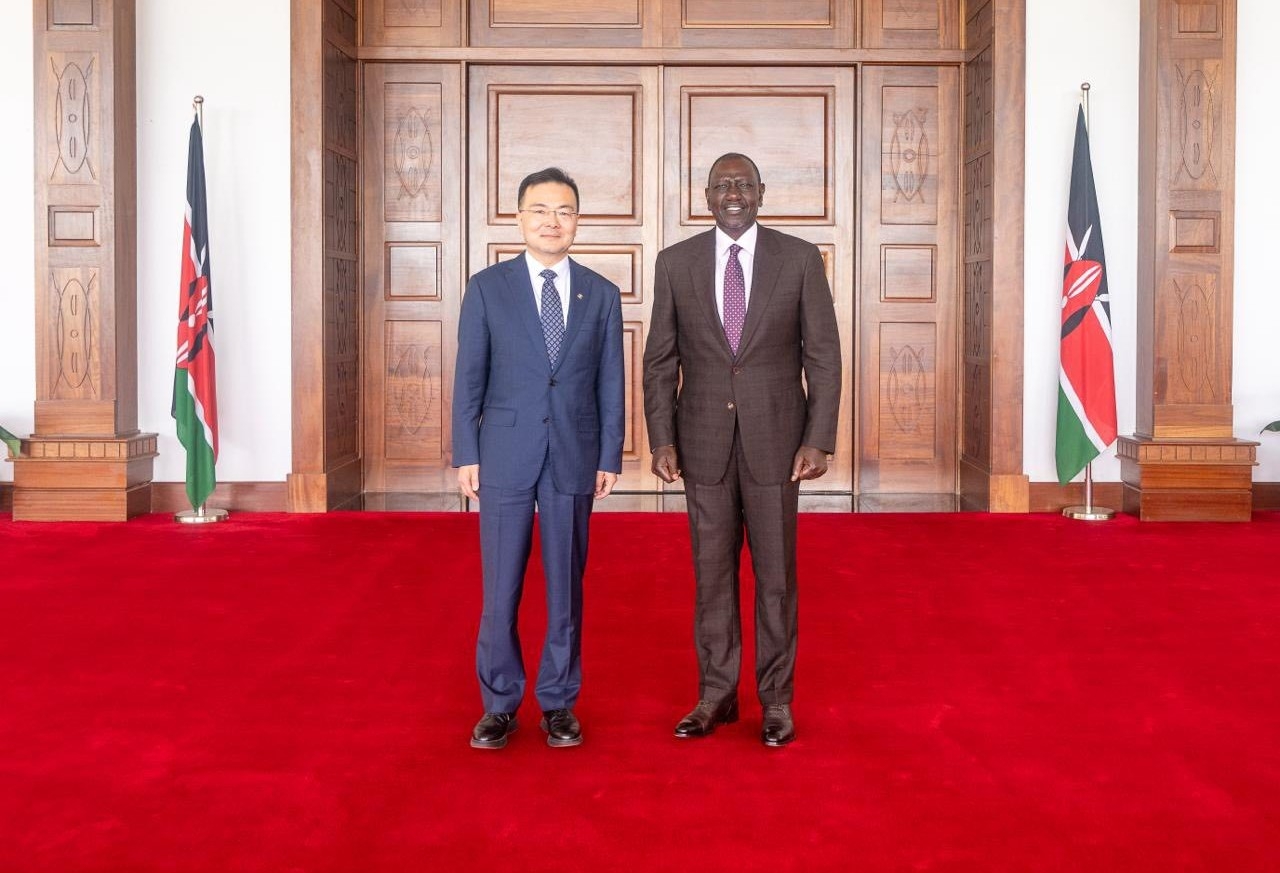A conservancy's efforts to prevent poaching and increase the population of black rhinos is bearing fruit, with the sanctuary in Ngulia hills hosting 100 of the highly endangered species.
Ngulia Sanctuary, a 90km2 conservancy with electric fencing, keeps the black rhinos under close monitoring to protect them from harm.
Africa Wildlife Foundation ecologist Kenneth Kimitei said the electric fence is currently being upgraded to better secure the species.
Kimitei said as the number of rhinos in the sanctuary grows, some are released into Tsavo West National Park.
If the numbers exceed the carrying capacity, it will cause severe degradation of the habitat, he said.
“We had one poaching incident on December 31, 2016 where a mother and a calf was poached,” he said. No poaching incident has been reported since them.
Kimitei said the well-equipped and facilitated team and available water for rhinos are the reasons for the success of conservation at the sanctuary.
“Rhinos are water-dependent. They take water at least two times a day,” he said.
The sanctuary has five water holes supplied by a nearby borehole. AWF provided the funding for water and a standby generator to pump it.
Kimitei said the well-maintained fence and dedicated rangers have ensured that the breeding of the iconic species succeeds.
“We have provided rangers with proper housing, fresh water and protective gear. The sanctuary also has good roads,” he said.
Armed Kenya Wildlife Service rangers do patrols for 24 hours. They also identify and record rhinos using special marks such as their body shape, ear notching among others.
Every time a new calf is born, their records are kept as it will inform decision making.
Kimitei said close monitoring of competitive herbivores such as elephants and giraffes was also being done.
AFW is currently upgrading the five strands electric fence to 10 strands. The distance between the poles is also being reduced from 10 meters to seven meters.
“The strands will also be connected to a siren that goes off when tampered with,” he said.
The 52-kilometre perimeter fence upgrade for the sanctuary will cost Sh500,000 per kilometre.
Rangers at the sanctuary are also armed with technology to help them monitor rhinos and combat poaching.
Apart from protection, the aim of the sanctuaries is to build up the number of rhinos as quickly as possible.
Rhinos are a species of conservation concern following a dramatic reduction in their population in the 1970s and early 1980s as a result of the illegal trade in their horn.
Kenya’s black rhino population declined from approximately 20,000 animals in 1970 to fewer than 400 animals in 1987.
The country's black rhino action plan 2017-2021 says that the future of the species is of critical importance to the government.
Black rhinos are smaller than white rhinos, and there is actually no colour difference between them at all.
Black rhinos use their hooked lip to browse shrubs – and prefer thick bush habitat.
They are generally more solitary and shy than the white rhino and have a reputation for being more aggressive too.
The government says rhinos are a flagship species, a highly charismatic animal that can serve as a rallying point for conservation. They capture the attention of people from all over the world and can generate significant returns from wildlife-based tourism.
They are also an umbrella species as their conservation depends on large areas of ecosystems being conserved and protected.
Therefore they serve the objective of wider biodiversity conservation.
Rhinos are keystone species with significant roles in ecological dynamics. Their persistence is important to the conservation of other elements of biodiversity.
The sixth edition of the Black Rhino Action Plan’s long-term vision is to have a meta-population of at least 2,000 black rhinos of the eastern African subspecies in Kenya, and in suitable habitats as a global heritage.
The overall goal is to achieve a meta-population of 830 black rhinos by the end of 2021; a net growth of at least 5 per cent per annum maintained in at least six established populations; positive net growth achieved in all recovering populations.













